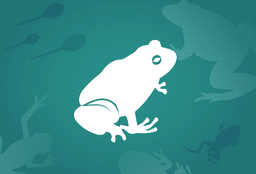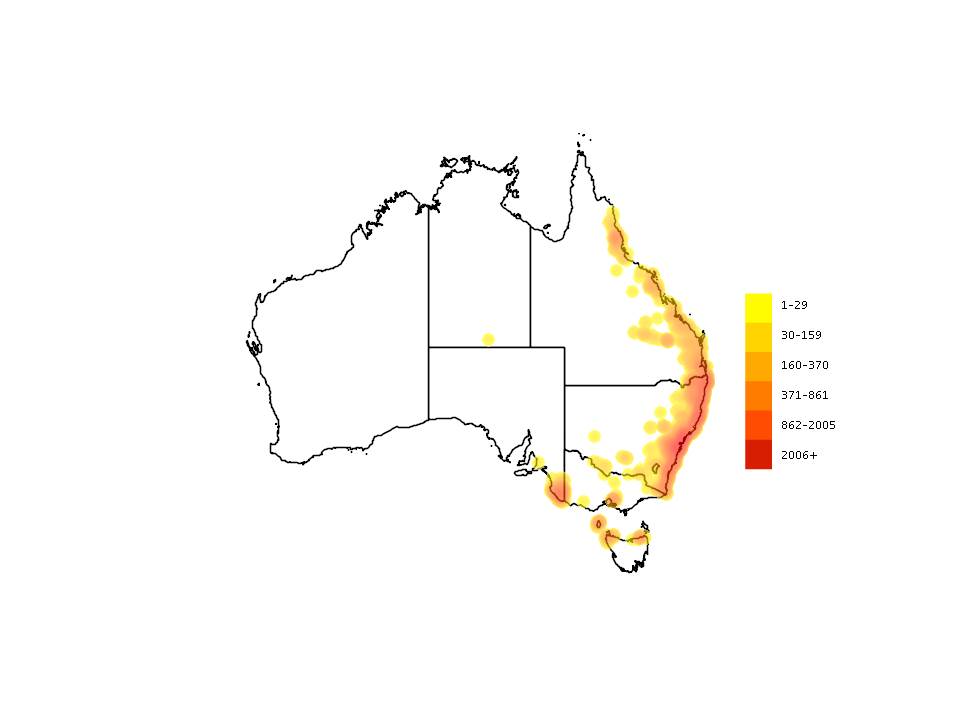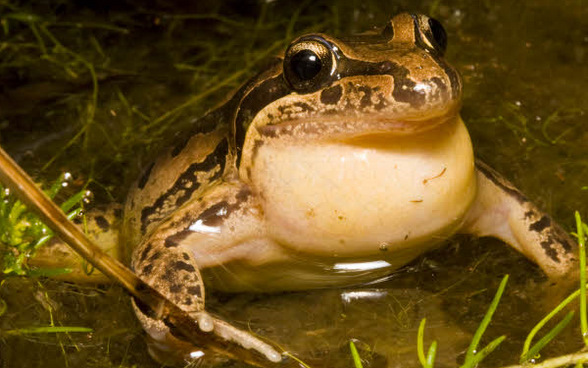Distinctive features
- A two-coloured iris that is golden brown above and dark brown below.
- Its skin is smooth and its long, slender fingers and toes have no webbing.
- Its eggs are found within a foam raft that resembles beaten egg whites with pepper!
Behaviour
Call
Males call while in or near water. Their call is a single, short “tuk” or “whuck” which is repeated every few seconds. It has been described as a popping sound, like a tennis ball being whacked, or a hammer striking an anvil.
Listen to the Striped Marsh Frog call © Nature Sounds/David Stewart
Diet
Almost any animal smaller than itself, including moths, flies, ground-dwelling insects and other frogs.
Movement
Hides under logs, stones and leaf litter during the day, and is usually not far from permanent water.
Breeding
Occurs in permanent water more commonly in the warmer months. Males begin to call on land and then move into the water from where they usually call at night. Females lay their eggs in a floating foam of bubbles (often attached to vegetation) in the still waters of swamps, marshes, dams and ponds. The tadpoles hatch after a few days.
Field Guide
Improve your identification skills. Download your Striped Marsh Frog field guide here!





